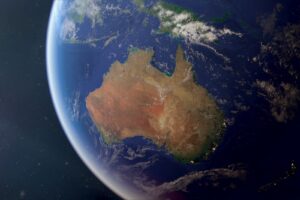Optus Mobile Review ALDI Mobile Review Amaysim Mobile Review Belong Mobile Review Circles.Life Review Vodafone Mobile Review Woolworths Mobile Review Felix Mobile Review Best iPhone Plans Best Family Mobile Plans Best Budget Smartphones Best Prepaid Plans Best SIM-Only Plans Best Plans For Kids And Teens Best Cheap Mobile Plans Telstra vs Optus Mobile Optus NBN Review Belong NBN Review Vodafone NBN Review Superloop NBN Review Aussie BB NBN Review iiNet NBN Review MyRepublic NBN Review TPG NBN Review Best NBN Satellite Plans Best NBN Alternatives Best NBN Providers Best Home Wireless Plans What is a Good NBN Speed? Test NBN Speed How to speed up your internet Optus vs Telstra Broadband ExpressVPN Review CyberGhost VPN Review NordVPN Review PureVPN Review Norton Secure VPN Review IPVanish VPN Review Windscribe VPN Review Hotspot Shield VPN Review Best cheap VPN services Best VPN for streaming Best VPNs for gaming What is a VPN? VPNs for ad-blocking Starlink is still in beta and will need to build more ground stations before the service becomes more widely available in Australia but the company now has the legal signoff to start planning for nationwide coverage. For the next step in its rollout, Starlink is aiming its efforts towards South-East Australia, where there are three ground stations already in Cataby, Merredin and Wagin. After that, the focus will shift to areas in South Australia, where there are ground stations in Pimba and Ki Ki. Additional ground stations are being built throughout the year, with more services expected to go live from late 2021 to early 2022. The new licences still include the special condition that states Starlink’s ground station transmitters “must not be operated within 70 kilometres distance from the Murchison Radioastronomy Observatory,” a planned Square Kilometre Array Radio Telescope in Western Australia. The clause appeared after the astronomical community raised concerns regarding the potential light pollution and radio interference caused by Starlink satellites. In conversation with the ABC, Monash University astronomer Dr Michael Brown said it is “good to see that condition in there [the 70-kilometre restriction] but Starlink will still have an impact,” due to the sheer number of satellites using the same frequency range that is used for radio astronomy. Anecdotally, one Australian partaking in the Starlink private beta has experienced speeds up to 344Mbps, hovering between 150Mbps and 250Mbps on average (ABC). On the other hand, Satellite NBN is capped at 25Mbps, with the potential to boost above that when network bandwidth allows it. Starlink also offers unlimited downloads whereas Satellite NBN customers are restricted by data caps and peak/off-peak usage amounts. On the flipside, Starlink has a more expensive entry fee. There’s only one Starlink plan which costs $139 per month and comes with a hefty $700 setup fee and a $100 equipment handling fee whereas Satellite NBN starts at $39.95 (SkyMesh). Previously, Starlink was only licensed to sell its satellite internet service to low-density areas in Australia but the latest agreement with the ACMA allows it to sell its services to metropolitan areas too. With that said, Elon Musk has warned that Starlink will work better in low population areas than it will in busier metropolitan areas. So those living in metropolitan hubs might not experience the same speeds and performance as regional Australians as the service becomes more widely available. Preorders for Starlink are available at the official website. You will be asked to pay a $139 deposit to enter the queue which will be refunded if your address can’t be serviced by Starlink.
